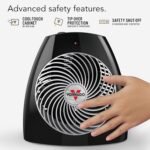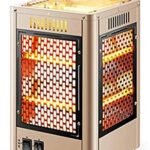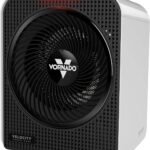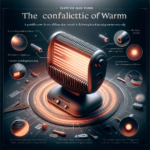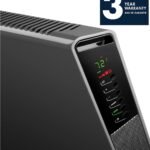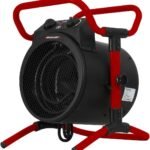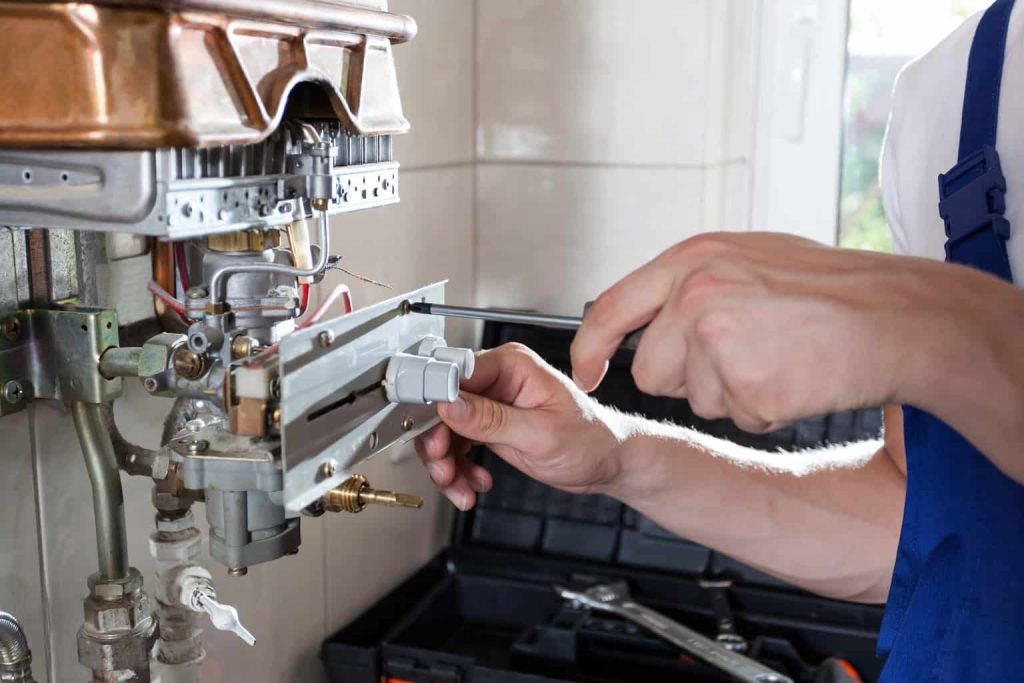
Nobody likes a cold shower, especially when the weather outside starts to turn chilly. A hot shower in the morning is the best way to start the day – and a warm shower or bath at the end of the day is perfect for resting and relaxing.
But if you’ve been cranking up the heat in the shower, but you still have lukewarm – or even cold – water, you may be wondering what the problem is. Is your hot water heater broken? Is there a leak? Do you need a bigger heater?
In this comprehensive guide, we’ll discuss everything you need to know about why your shower may be cold – and some of the steps you can take to try to diagnose and remedy the issue. Let’s get started now.
1. You Don’t Have Enough Hot Water
The simple solution is often the most obvious one. You may just not have enough hot water for all of your needs. If you have a larger family, multiple guests staying at your home, or you’ve recently installed new appliances like a dishwasher or a washing machine, this could be the cause of your lukewarm or cold shower.
The average shower uses 10 gallons of water, a dishwasher uses about 6 gallons, and clothes washers use about 7 gallons of water, according to the Department of Energy. That means, if two people take an extra-long shower, and you run your dishwasher at the same time, a water heater with a 40-gallon tank capacity may struggle to provide you with hot water.
The same is true of tankless water heaters – but in a different way. Tankless heaters don’t use a storage tank, but they do have a set Gallons Per Minute (GPM) of water which can be heated to the proper temperature.
For example, a tankless heater rated for 5 GPM could struggle to provide adequate hot water if two people are showering simultaneously using shower heads with a flow of 2 GPM, and another person is washing dishes by hand, demanding 1 more GPM of hot water.
The best way to see if this is your problem is to simply wait until there is nobody using any of your hot water. Then, crank up your shower, and see if it gets hot. Try another faucet, too, just to make sure the problem isn’t localized.
If you have a hot shower, this is most likely your problem. And while you could make adjustments like using lower-flow faucets and shower heads to minimize water usage, it may be a better idea to simply invest in a more powerful tankless water heater, which can keep up with your demands.
2. Your Hot Water Heater Isn’t Turning On (Or It’s Defective)
Your hot water heater could be faulty in a number of ways. Here are a few common problems.
Gas heaters
- The pilot light has burned out, preventing ignition. It will need to be relit.
- There is no gas supply to the heater. Double-check all gas lines and valves, to make sure they’re in the open position.
- The burner is not working properly. It may need to be repaired or replaced.
- You may have a gas leak. If you smell gas, shut off your gas lines immediately, leave your home, and call a professional for repairs.
Electric heaters
- The circuit breaker could have been tripped. Check your electrical panel, and reset the switch. If the circuit breaker keeps tripping, this could be a sign that the water heater is faulty, or was installed improperly.
- The high-temperature cutoff switch has tripped. You can remove the panel and look for the button. If you press the button and nothing happens, it’s defective.
- Your tank is leaking, and has shorted the electronics in the compartment.
- Your electric heating elements are damaged or faulty
We recommend having a professional come and troubleshoot your water heater, as you could be having multiple issues, and it may not be worth repairing the heater – especially if it’s older, you may want to consider buying a modern, energy-efficient tankless unit.
3. Your Hot Water Heater Isn’t Set To A Hot Enough Temperature
If your shower is somewhat warm, but it does not seem like it reaches a hot enough temperature – even if you crank it all the way to the “hot” side of the faucet – this could be your problem.
Most hot water heaters can be adjusted to change the temperature at which the heater will hold (or produce, in the case of tankless heaters) water. Typically, the “magic number” is 120 degrees Fahrenheit.
That’s because this temperature provides minimal scald risk, and also stems bacterial growth in hot water heaters. But in some cases, this may not be high enough – or your water heater may be set to a lower temperature.
On some water heaters, you can just turn a dial or use a digital interface on the outside of the water heater. On others, though, the temperature control may be hidden behind a panel. You’ll need to turn off the power, unscrew the panel housing, find the temperature dial, and adjust it.
If you’re not confident in your DIY skills, just call up a local plumber. You’ll pay only a few bucks, and your shower will be nice and hot after the temperature has been adjusted.
4. Your Shower Valve Is Not Properly Adjusted
This is another potential reason you could have lukewarm water, even when nobody else is consuming hot water. If you have been cranking your heat all the way up in the shower, but it never seems hot enough, this is likely the problem.
The shower valve stem may need to be adjusted. This is because the shower valve contains a plastic piece that’s called the “Rotational Stop Limit”. Basically, this is a small plastic limiter that stops you from turning the hot water too far – preventing you from scalding yourself.
In most cases, this is properly adjusted so that, at the highest setting, your shower won’t be dangerous. But in some cases, it may be set too low, preventing you from getting enough hot water to the shower.
The exact process for adjusting your valve will depend on your tub or shower, but the basic process is this:
- Remove the handle from the faucet
- Take off the metal cover to expose the valve stem
- Identify the RSL, which looks like a circular, plastic piece that is nestled around the valve stem.
- In most cases, turning the RSL counter-clockwise will allow you to release more hot water, and turning it clockwise will restrict hot water. Turn it slightly towards the “hot” side.
- Replace the faucet handle, and test the hot/cold water mixture. If you notice an increase, but it’s still not hot enough, repeat this process until it’s hot enough. If you don’t notice a difference at all, then the RSL and shower valve is not the cause of the issue.
This YouTube guide will help you understand what we’re talking about, if you want to do this yourself. Again, this is simple enough to do on your own, but call a plumber if you don’t feel comfortable, or are confused about the process.
5. Your Shower Mixing Valve Is Faulty
If you are noticing that you get hot water in all of your other showers, and from the rest of your faucets and appliances, and you’ve ruled out the RSL and a faulty hot water heater, and you’re still experiencing uncomfortably cold showers, your shower mixing valve could be faulty.
As the name suggests, the shower mixing valve is responsible for mixing hot and cold water together, to create the appropriate shower temperature. These valves can wear out, break, or begin to leak if an o-ring fails. They may also be positioned incorrectly. All of these issues can cause uncomfortable shower temperatures.
The good news is that shower mixing valves are cheap – much cheaper than replacing a hot water heater. The bad news is that replacing the shower mixing valve is quite difficult and involved – it’s not the best project if you’re not a seasoned DIY’er.
If you want to try to inspect and replace your mixing valve yourself, this guide from This Old House may help. But we generally recommend hiring a professional for this kind of work.
6. Your Dip Tube Is Broken
If the water you get from your shower is not hot, and you have an older, tank-based water heater, it’s possible that your dip tube is broken.
The cold water supply dip tube, or dip tube for short, is meant to send cold water to the bottom of the tank to heat it up, allowing hot water to rise to the surface, and be sent directly to your appliances and faucets.
This plastic tube can become brittle with age, causing cold water to leak and collect on the top of your water tank. Then, this water is sucked up, and sent to your faucets, rather than the hot water.
If you have been noticing low water pressure in some of your faucets, this is probably the issue, as the deteriorating tube will send small plastic bits into your pipes, which will clog your strainers and filter screens.
If you think this is the issue, contact a plumbing professional. You definitely don’t want to try to work on the inside of your hot water heater on your own.
Get Back To Your Hot Showers – Use This Guide For Troubleshooting!
Anyone of these problems could be the cause of your cold shower. So take another look now, think about what the issue might be, and contact a plumbing professional if you need further assistance.



